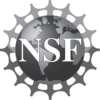A new article in the Proceedings of the National Academy of Sciences of the United States of America (PNAS) analyzes the Coastal Observation and Seabird Survey Team (COASST), a hands-on citizen science project, in the context of a meta-analysis of 54 other projects to “quantitatively explore” citizen science data. The article’s findings suggest that “hands-on citizen science can produce high-quality data especially if participants persist,” and that projects best succeed when coordinators pay attention to and understand the the demographic data of participation.
Abstract

“The explosive growth in citizen science combined with a recalcitrance on the part of mainstream science to fully embrace this data collection technique demands a rigorous examination of the factors influencing data quality and project efficacy. Patterns of contributor effort and task performance have been well reviewed in online projects; however, studies of hands-on citizen science are lacking. We used a single hands-on, out-of-doors project—the Coastal Observation and Seabird Survey Team (COASST)—to quantitatively explore the relationships among participant effort, task performance, and social connectedness as a function of the demographic characteristics and interests of participants, placing these results in the context of a meta-analysis of 54 citizen science projects. Although online projects were typified by high (>90%) rates of one-off participation and low retention (<10%) past 1 y, regular COASST participants were highly likely to continue past their first survey (86%), with 54% active 1 y later. Project-wide, task performance was high (88% correct species identifications over the 31,450 carcasses and 163 species found). However, there were distinct demographic differences. Age, birding expertise, and previous citizen science experience had the greatest impact on participant persistence and performance, albeit occasionally in opposite directions. Gender and sociality were relatively inconsequential, although highly gregarious social types, i.e., “nexus people,” were extremely influential at recruiting others. Our findings suggest that hands-on citizen science can produce high-quality data especially if participants persist, and that understanding the demographic data of participation could be used to maximize data quality and breadth of participation across the larger societal landscape.”
Darlene Cavalier, the founder of SciStarter, is among the article’s authors.
Find the full article here.

